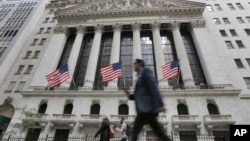Most of the post-Brexit equity sell-off has now been erased to close out the month of June and the first half of 2016. The Dow Jones industrial average is coming off three consecutive days of gains of more than 200 points. For the month, the Dow rose 0.8 percent, the S&P 500 gained 0.1 percent and the Nasdaq lost 2.1 percent.
The S&P 500 was on track for its best weekly gain since October after making a stunning rally following two days of massive sell-offs because of the surprise Brexit vote. The Dow was within reach of 18,000, while the S&P 500 was back over the 2,100 level intraday on Friday.
Once again, markets were boosted by central bank easing talk; the European Central Bank said it is weighing changes to its bond-buying program, and Bank of England Governor Mark Carney said his organization probably would have to loosen policy within months to deal with the fallout of the Brexit vote.
Interestingly, gold, which is viewed as a safe-haven asset, extended its fifth weekly advance, and silver jumped to its highest point since September 2014. Yields on government bonds slipped around the world, showing investors were uncertain about the state of the global economy.
Holiday-shortened week ahead
U.S. markets will be closed Monday, July 4, in observance of the Independence Day holiday, sending traders to the beaches for a well-deserved rest following market volatility around Brexit.
Two key pieces of economic data are on tap: International Trade and the all-important Employment Situation Report on Friday. The employment data give the most comprehensive report of how many people are looking for jobs, how many have them, what they're getting paid and how many hours they are working. These numbers are the best way to gauge the current state, as well as the future direction, of the economy.
On Wednesday, the Federal Open Market Committee (FOMC) minutes from the June meeting will be released at 2 p.m. EDT. While investors do not expect a change in the minutes from the last FOMC meeting, the release will move the markets as traders pick apart each word, looking for clues to monetary policy.
The market now does not expect an interest rate hike until 2018. Fed funds futures are pricing in the first hike to 0.50-0.75 percent as more likely in February 2018, compared with January 2017 just last week before the Brexit vote.
The earnings calendar is still very quiet and will remain light until Alcoa kicks off the unofficial start of earnings season July 11, a welcome change for traders to take the focus off macro concerns. The only notable S&P 500 reporting earnings is Pepsi before the market opens Thursday.







